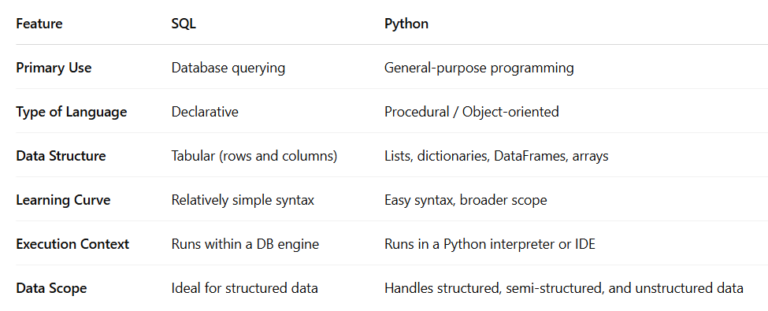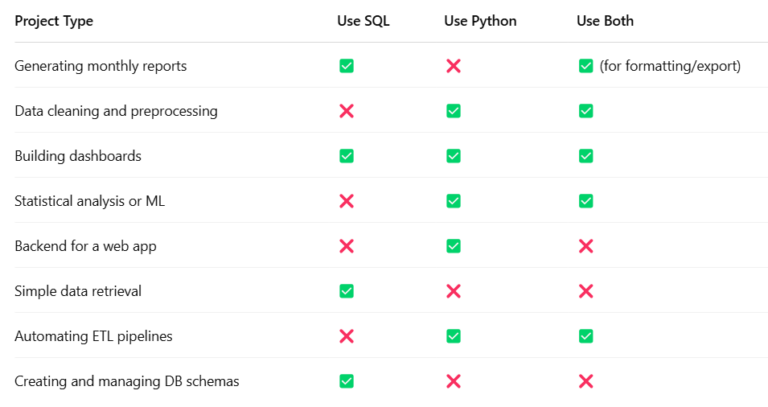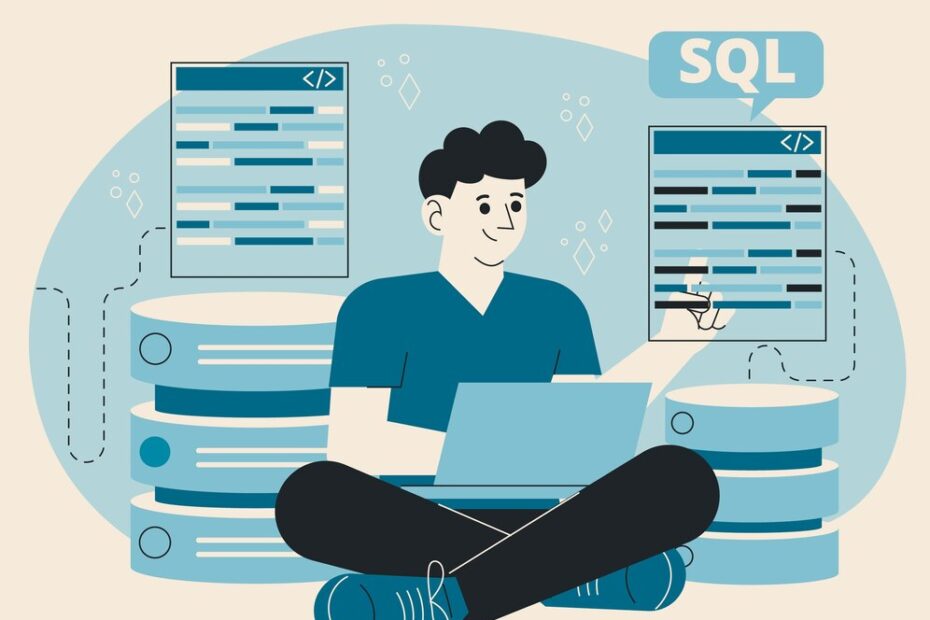As the demand for data-related roles continues to surge whether in data analysis, data science, software engineering, or business intelligence professionals often find themselves comparing two popular languages: SQL vs Python.
At first glance, they may appear to serve similar purposes, but understanding the nuances between them is essential. SQL vs Python isn’t a competition but rather a choice of the right tool for the right task. Whether you’re managing data pipelines, building web applications, or creating reports, choosing the right language can significantly impact your productivity, scalability, and performance.
What Is SQL?
Structured Query Language (SQL) is the standard language for working with relational databases. It enables users to define, query, and manipulate structured data.
Key Capabilities:
Data Retrieval:
SELECT,WHERE,ORDER BYData Aggregation:
GROUP BY,HAVING, aggregate functions likeSUM(),COUNT()Data Modification:
INSERT,UPDATE,DELETEDatabase Management:
CREATE TABLE,ALTER TABLE,DROP TABLEJoins:
INNER JOIN,LEFT JOIN,FULL JOINto combine data from multiple tables
Common Use Cases:
Generating reports from transactional databases
Filtering large datasets by business rules
Performing data audits and quality checks
Supporting BI dashboards (e.g., Power BI, Tableau)
Tools That Use SQL:
MySQL, PostgreSQL, SQLite, Oracle DB
SQL Server, Google BigQuery, Amazon Redshift
What Is Python?
Python is a high-level, general-purpose programming language known for its clean syntax, ease of use, and rich ecosystem of libraries. Unlike SQL, which is specialized, Python is incredibly versatile.
Key Capabilities:
Data Processing: via Pandas, NumPy
Automation and Scripting: automate tasks, schedule jobs
Visualization: Matplotlib, Seaborn, Plotly
Machine Learning & AI: Scikit-learn, TensorFlow, PyTorch
Web Development: Django, Flask
APIs and Integration: REST APIs, web scraping, JSON/XML parsing
Common Use Cases:
Building full data pipelines
Web scraping and data ingestion
Advanced statistical analysis
AI and machine learning models
Application development
Key Differences at a Glance

Real-World Scenarios
Scenario 1: Querying a Sales Database
You need to get a report of total sales by region and product for Q1 2025.
Best Tool: SQL
This is SQL’s sweet spot: retrieving and aggregating structured data directly within the database engine.

Scenario 2: Predicting Customer Churn
You want to predict which customers are likely to churn using logistic regression.
Best Tool: Python
SQL cannot do machine learning or build models. Python, with libraries like scikit-learn, is made for it.

Scenario 3: Clean and Analyze Data
You export a CSV from your database and need to clean and visualize the data.
Best Tool: Python (with Pandas)
While SQL can filter and transform data, Python offers much more flexibility and visualization capabilities.

Scenario 4: Building an ETL Pipeline
You extract data from a database, transform it, and load it into a warehouse or cloud storage.
Best Tool: Both (SQL + Python)
SQL for querying the source database
Python for transformation, automation, and pushing to target systems like Google Cloud Storage, S3, or a warehouse
Using SQL and Python Together
Combining both languages is common in modern data workflows. Here’s how they work hand-in-hand:
Use SQL to extract data efficiently from relational databases.
Use Python to clean, analyze, and visualize the extracted data.
Use Python to automate the entire process and integrate with other systems.
Tools for Integration:
Jupyter Notebooks: run SQL and Python side-by-side using
%sqlmagicSQLAlchemy: ORM library to run SQL in Python code
Pandas
read_sql(): load SQL results into a DataFrame
Choosing the Right Language for Your Project

Final Thoughts
Both SQL and Python are indispensable tools in a data professional’s toolkit. They’re not competitors—they’re complementary.
Choose SQL when working directly with relational databases and performing structured queries.
Choose Python for its flexibility in scripting, automation, analytics, and advanced computation.
Combine both to create powerful, scalable, and insightful data solutions.
Mastering both will make you not just a coder, but a well-rounded problem solver ready for any data challenge.
